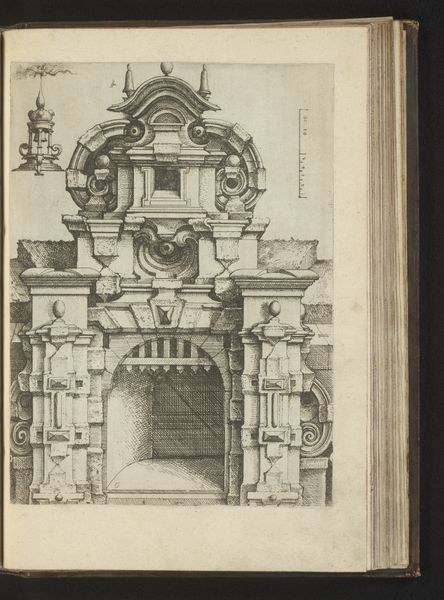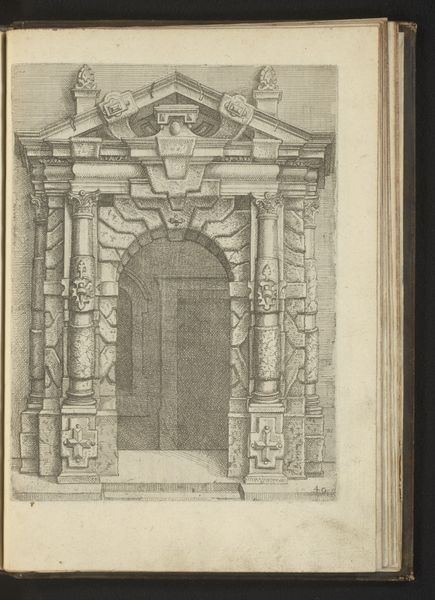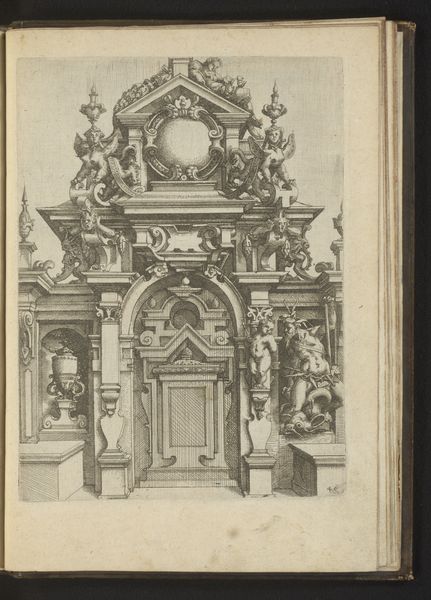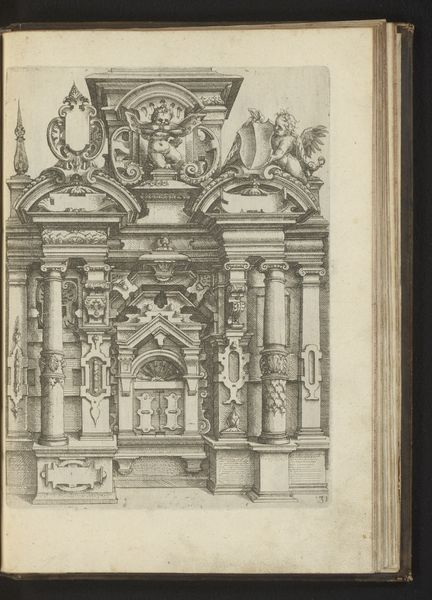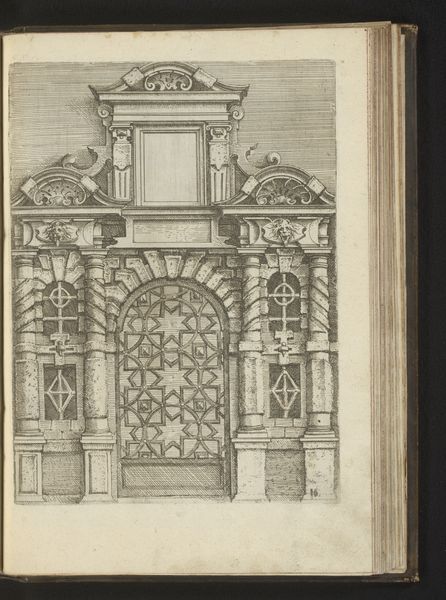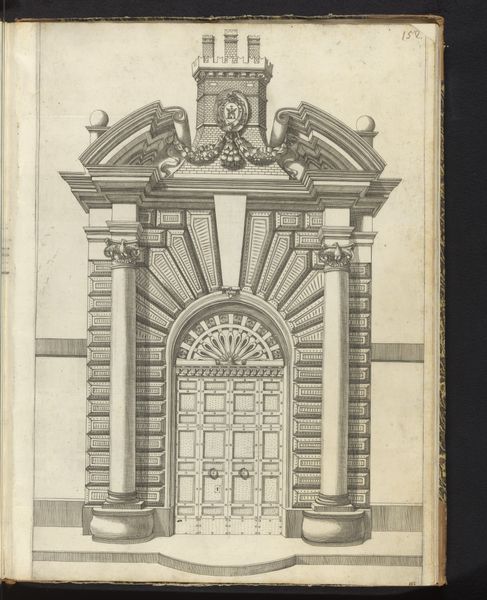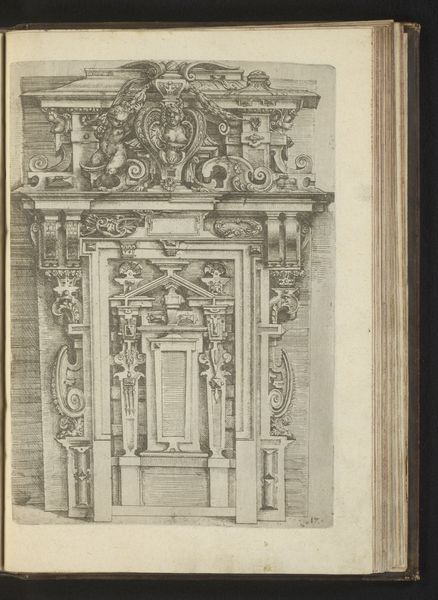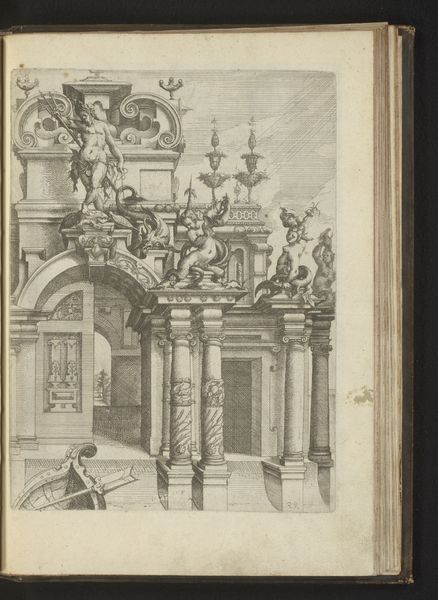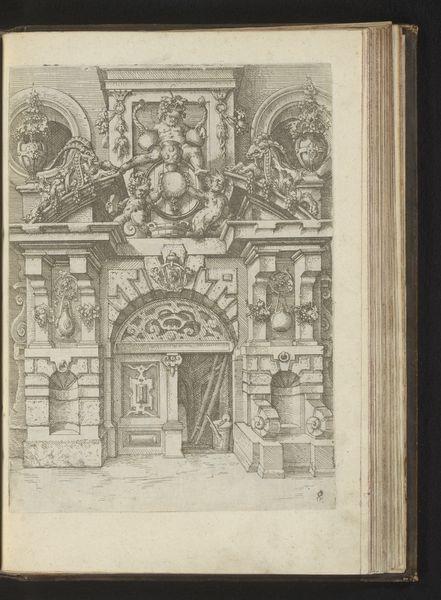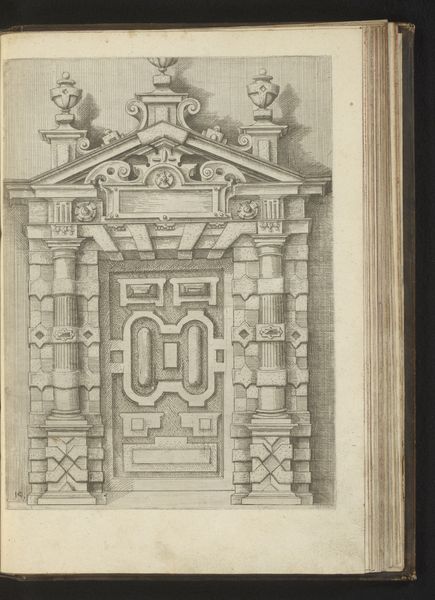
drawing, ink, architecture
#
drawing
#
11_renaissance
#
ink
#
geometric
#
architecture
Dimensions: height 245 mm, width 186 mm
Copyright: Rijks Museum: Open Domain
Editor: Here we have Wendel Dietterlin's ink drawing, "Venster met gebroken fronton," created sometime between 1593 and 1595. The geometric architectural elements are intensely rendered, but the composition feels slightly unstable, maybe because it’s only a fragment. What do you see in the structure itself? Curator: I observe a compelling tension in the formal aspects of this piece. Consider the meticulously rendered textures; the artist’s medium highlights every fracture and imperfection of the stone. The symmetrical facade, disrupted only by this breakage, invites us to examine this subtle deviation. It prompts inquiry: how does this asymmetry enhance the overall composition? Editor: So the "flaw" is integral to the structure. It does add an interesting tension. Does the disruption serve some formal function? Curator: Precisely. Notice the contrast between the rough, broken edges of the fronton and the smooth, refined surfaces elsewhere. This deliberate juxtaposition draws the eye, activating the visual field, doesn't it? This manipulation, rather than a mistake, heightens our awareness of the other details and invites scrutiny. Editor: I never thought about the fractures that way. So it’s more about what those lines DO, structurally, not just what they depict. Curator: Exactly. Think of the drawing as an essay. Dietterlin isn't concerned with surface realism here, he is showing a game with architectural forms by use of line, shade and perspective. And through the calculated balance—or imbalance—achieved through form, an engagement with the foundations of visual experience becomes possible. Editor: That makes the piece much more intriguing. I see now how closely observing the formal elements reveals the underlying ideas. Curator: Indeed. A concentration on the materiality of this drawing and its intentional disruptions allows us to begin to interpret not only its architectectural elements, but, even, how we formulate understanding and generate aesthetic interest in a piece of art.
Comments
No comments
Be the first to comment and join the conversation on the ultimate creative platform.
